The 35 Most Fascinating Days in History
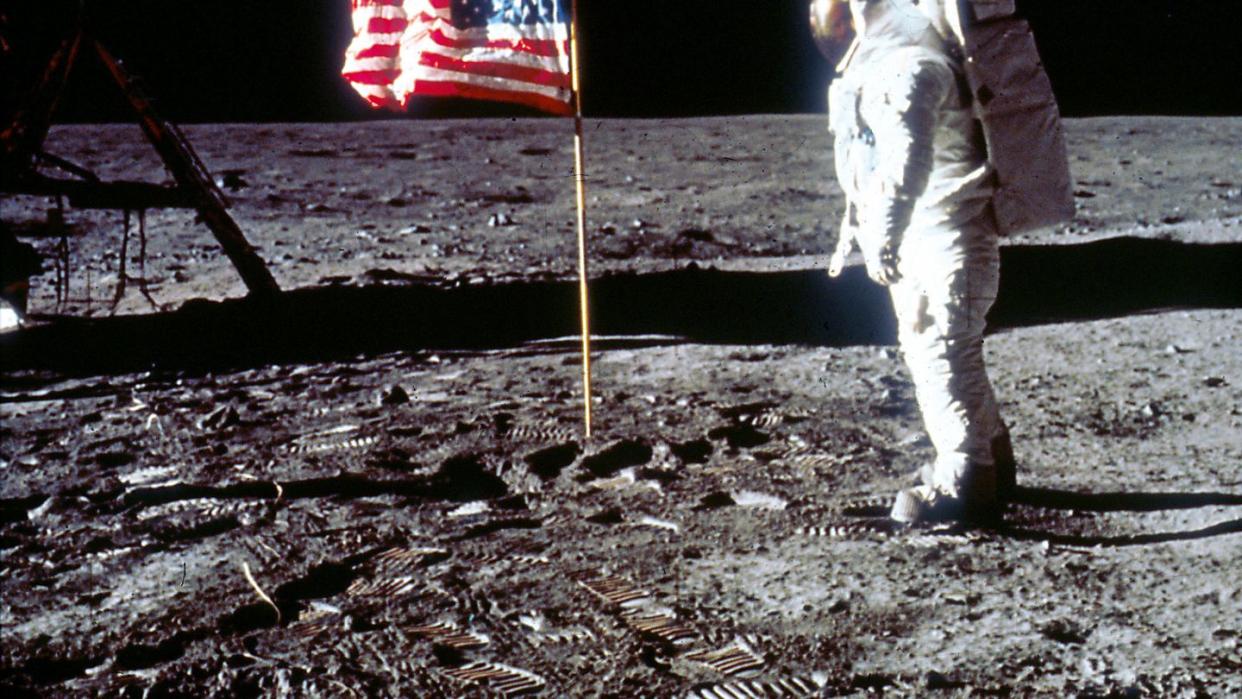
"Hearst Magazines and Yahoo may earn commission or revenue on some items through these links."
Turn the pages of the past, and you’ll find that some dates especially stand out, packed with milestone events that changed the course of our world. With so many major moments to count and just 365 days in a calendar year, it’s only natural that certain dates are extra special, filled with inspiring stories that have shaped who we are.
But you might be surprised to learn just how many major historical events happen to fall on the same day. That’s the premise of the new book from The HISTORY Channel, This Day in History For Kids: 1001 Remarkable Moments and Fascinating Facts. The book takes readers on a day-by-day journey from January 1 to December 31, uncovering at least one interesting and appropriate historical event for each day of the year.
This Day in History For Kids helps readers of any age discover world-changing events that coincide with their own birthdays, or pinpoint the exact dates of a wide array of events, from the invasion of Italy by the Huns to the launch of Roblox.

Buy This Day in History For Kids
When you line up big moments in history day by day, you’ll spot something cool: Some dates, just by chance, share several groundbreaking events within a single industry or theme, despite these events sometimes being separated by hundreds of years.
For example, did you know that the famous Pony Express mail service shares its birthday (April 3) with the very first cell-phone call, exactly 113 years apart? That’s a fascinating day for communication. Or let’s say you’re a scientist, looking for a good day to present your latest discovery. May we suggest February 8? That'll put you in the same company as Isaac Newton and Gregor Mendel.
So, let’s dive into some of the most interesting dates in history—days that gave us brilliant ideas, incredible breakthroughs, and even some dramatic clashes.
January 1: A Day for Political Upheaval
New year, new... nation? On January 1, 1863, President Abraham Lincoln signed the Emancipation Proclamation, freeing all enslaved people in the rebellious states amidst the third year of the Civil War.
Ninety-six years later, in 1959, massive political change came to Cuba, when Fidel Castro forced dictator Fulgencio Batista out of the country.
And in a more peaceful form of change, January 1, 2002, marks the day the Euro was introduced into public circulation, paving the way for a unified currency that would eventually be adopted by 19 European countries.
Buy This Day in History For Kids
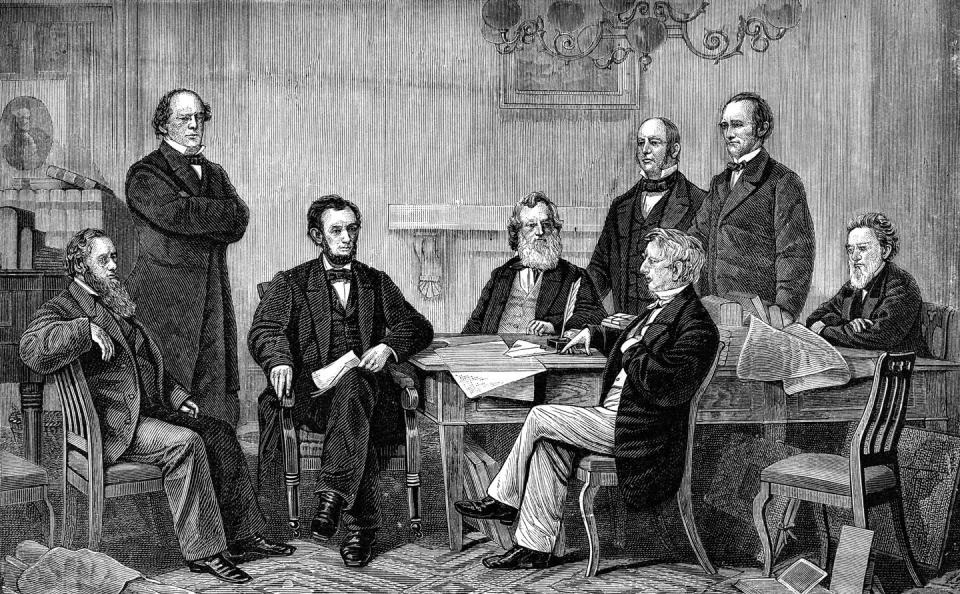
January 20: A Day for Landmark Inaugurations
Sure, in some sense, every inauguration is technically historic. But January 20 saw two very momentous inaugurations, albeit for two very different reasons.
In 1981, President Ronald Reagan’s inauguration was marked with something a little more important than a party at the White House: the release of the 52 Americans who had been held hostage in Iran for 444 days (though some have suggested that the timing may have been intentional).
Exactly 40 years later, Vice President Kamala Harris made history at her inauguration, becoming, as This Day in History for Kids notes, "the first female, first Black woman, and first Asian American person to hold the office of the VP in the United States."

January 29: A Day for Crowd-Pleasers
Did you join the throngs who rushed to cinemas to catch the premiere of Black Panther on January 29, 2018? If you sat in that theater feeling the buzz of excitement, you shared an experience similar to audiences 423 years earlier, who felt the same sense of anticipation for another landmark work of art.
Except, instead of the MCU, they were there to see the latest installment of the WSF: the William Shakespeare Folio. That's because, even though it would take another two years to be officially published, it was on January 29, 1595 that Romeo & Juliet is believed to have had its first performance.

February 4: A Day for Visionary Debuts
Stop us if you've heard this one before: One man had a vision for a product he felt could change the world, and everybody around him (except the people who worked for him and didn't get enough credit) laughed at it. But he stuck to his dream, and proved them all wrong. He turned his idea into a small company, which became a globally dominant force, and it had seismic impacts on world history.
Yes, that's happened a lot, but would you believe it happened twice on the very same day? On February 4, 1938, Walt Disney silenced the doubters by debuting the first American animated feature film, Snow White and the Seven Dwarfs, which briefly became the highest grossing film of all time.
Meanwhile, on February 4, 2004, Mark Zuckerberg launched a little social media website from his Harvard dorm room. That website, Facebook, would end up attracting billions of users, and with that, billions of dollars for its company, now known as Meta.
Buy This Day in History For Kids
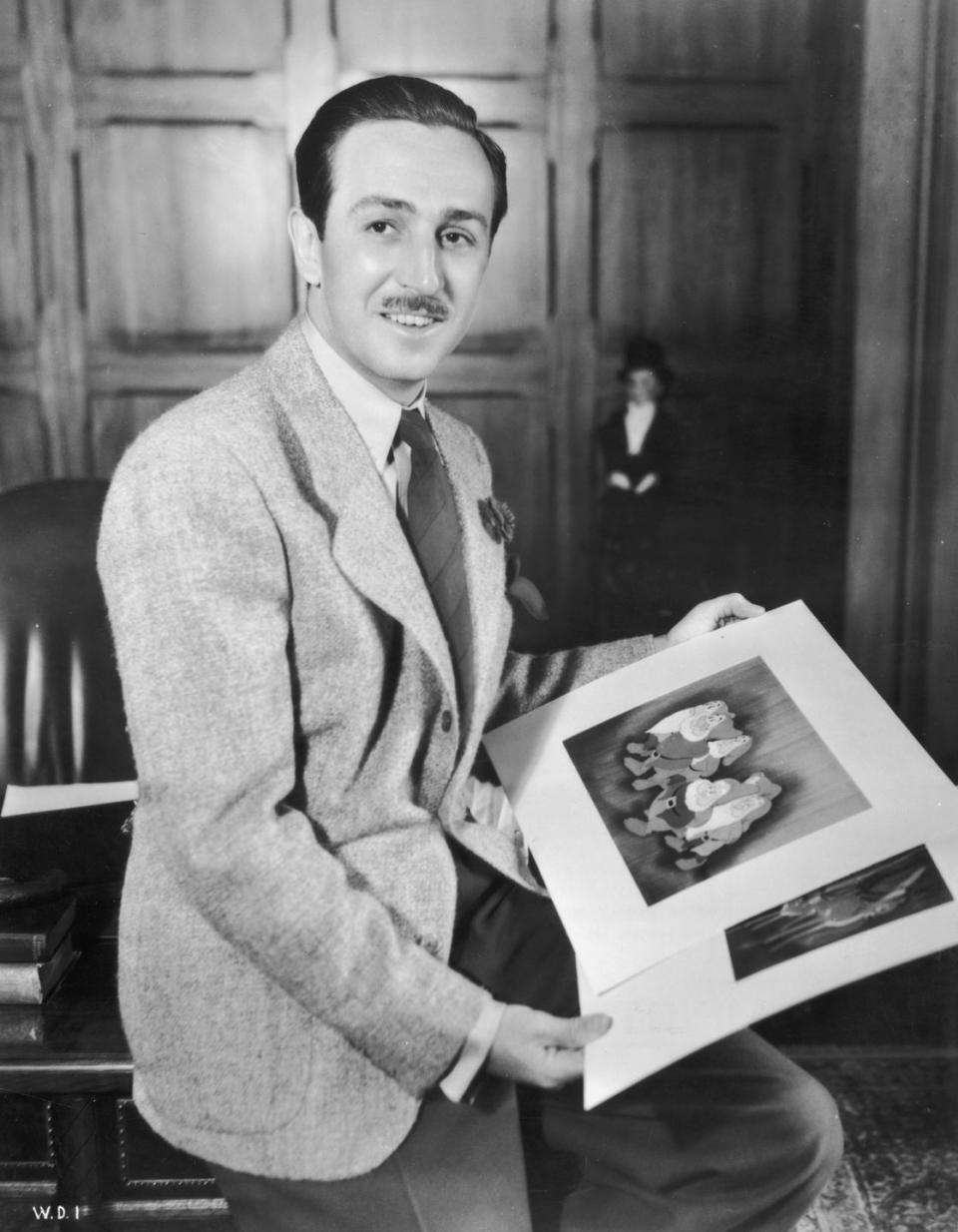
February 8: A Day for Scientific Breakthroughs
On February 8, nearly 200 years apart, two groundbreaking scientific papers were unveiled that dramatically reshaped our comprehension of the world.
First, in 1672, Isaac Newton presented a paper that demonstrated how sunlight, when passing through a prism, showed itself to be made of seven different colors: red, orange, yellow, green, blue, indigo, and violet.
Later, in 1865, Gregor Mendel presented his paper, "Experiments in Plant Hybridization," which demonstrated his discovery of dominant and recessive genes.
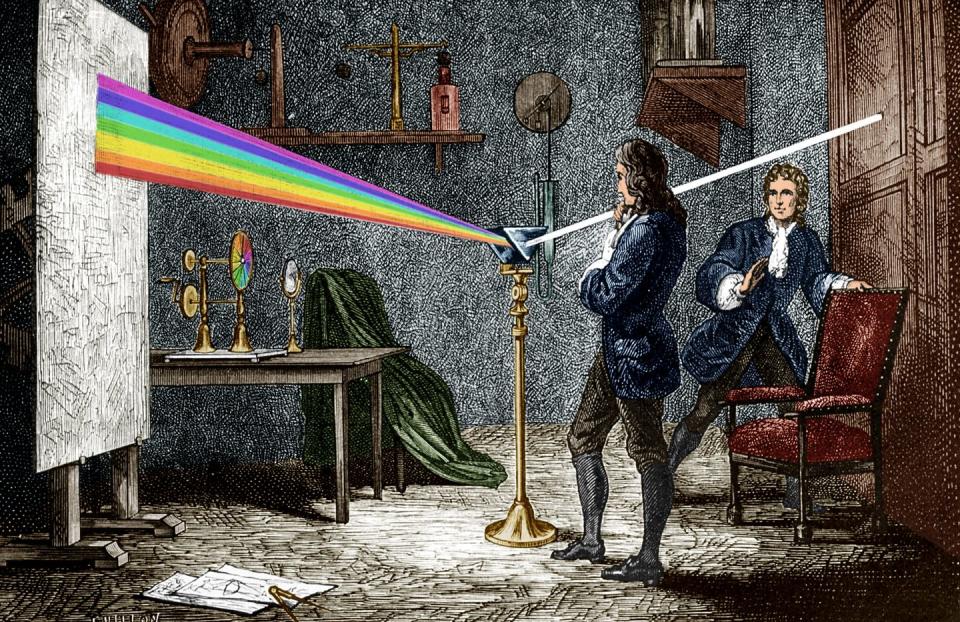
February 15: A Day for Wartime Rallying
On February 15, 1898, the USS Maine sank in Havana Harbor, and "Remember the Maine!" became a rallying cry as the U.S. entered the Spanish-American War.
Forty-five years later, on February 15, 1943, the famous "We Can Do It!" poster featuring Rosie the Riveter encouraged women to take up jobs in the defense industry during World War II.

March 11: A Day of Ecological Devastation
On three distinct occasions, March 11 has served as a stark reminder of Earth's fragility and the precariousness of its diverse inhabitants.
In 1967, marking a pivotal moment for conservation, the U.S. Fish and Wildlife Service released its inaugural list of endangered species. This roster safeguarded emblematic creatures like the bald eagle, red wolf, grizzly bear, American alligator, and manatee from the threat of hunting and habitat destruction.
In 2011, an earthquake in the Pacific Ocean caused a 128-foot-tall tsunami, which struck the Japanese island on Honshu and claimed 18,000 lives. It would also destroy the Fukushima power plant, forcing 150,000 to evacuate their homes for fear of leaked radiation.
And of course, in 2020, March 11 was the day the World Health Organization officially declared COVID-19 a pandemic, one whose list of victims continues to grow each day.

March 25: A Day of Galvanizing Events
Historic moments aren't just unprecedented achievements, but also sobering instances that prompt a collective resolve to prevent them from ever happening again.
That was the case on March 25, 1911, when a horrendous fire at the Triangle Shirtwaist Company factory in New York City claimed the lives of 145 workers and galvanized the public to demand labor reforms and safety laws to protect vulnerable workers.
Then, on March 25, 1965, Martin Luther King Jr. completed his march from Selma to Montgomery with 3,200 civil rights demonstrators. Many TV viewers were horrified by the images of police attacking King and his peaceful protestors with billy clubs and firehoses, and their outrage, paired with King's activism, galvanized the nation toward the passage of the Voting Rights Act.
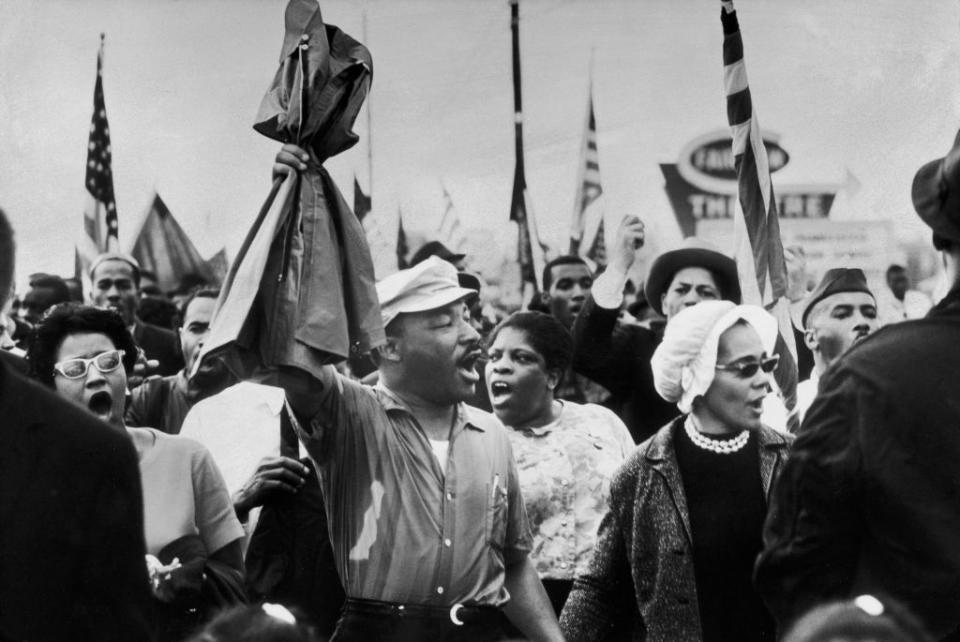
April 3: A Day That Changed Communication
These days, we communicate by video calls, texting, and meeting up in virtual spaces. What breakthroughs in communication technology await us around the corner?
Whatever they are, we'll probably find out on April 3.
After all, in 1860, that's when we saw the first ride of the Pony Express, America's transcontinental express mail system that carried communique from Missouri to California and back.
And on April 3, 1973 in New York City, Motorola employee Martin Cooper made the first cell phone call in history.
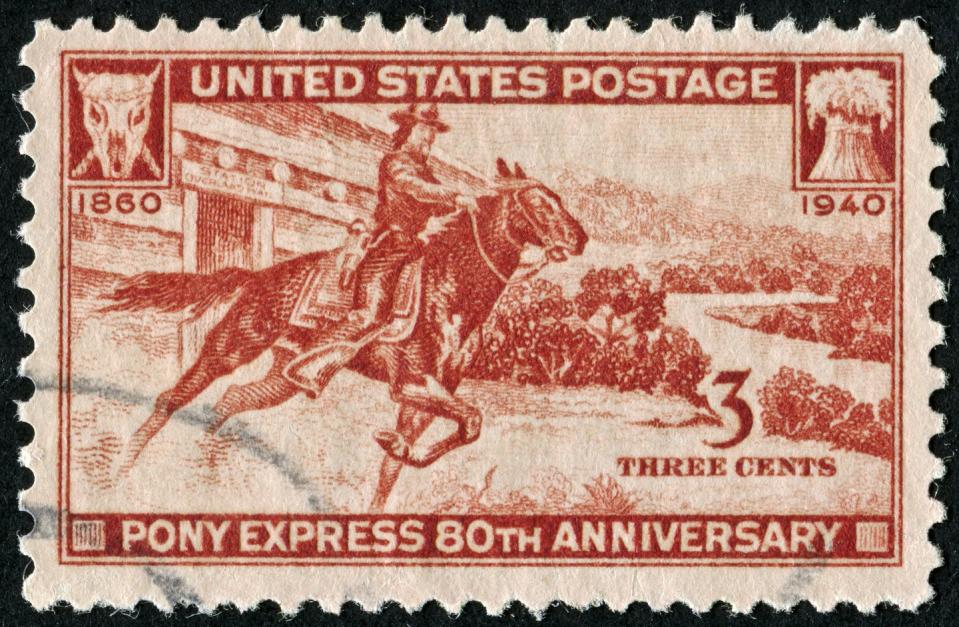
April 7: A Day for Inventions (That You Didn't Know Have Been Around That Long)
Did you ever find out a technology has been around a lot longer than you had realized? April 7 marks the anniversary of not one, but three such inventive milestones, each older than you might expect.
April 7, 1913? Inventor Fred Wolf patented the first refrigerator for the home.
April 7, 1927? AT&T demonstrated a video telephone call, when the then-Commerce Secretary made a video call from Washington D.C. to an audience in New York City. (That Commerce Secretary? Future president Herbert Hoover.)
April 7, 1969? The first Request for Comments was posted, marking the "Internet’s symbolic birthday."
Buy This Day in History For Kids
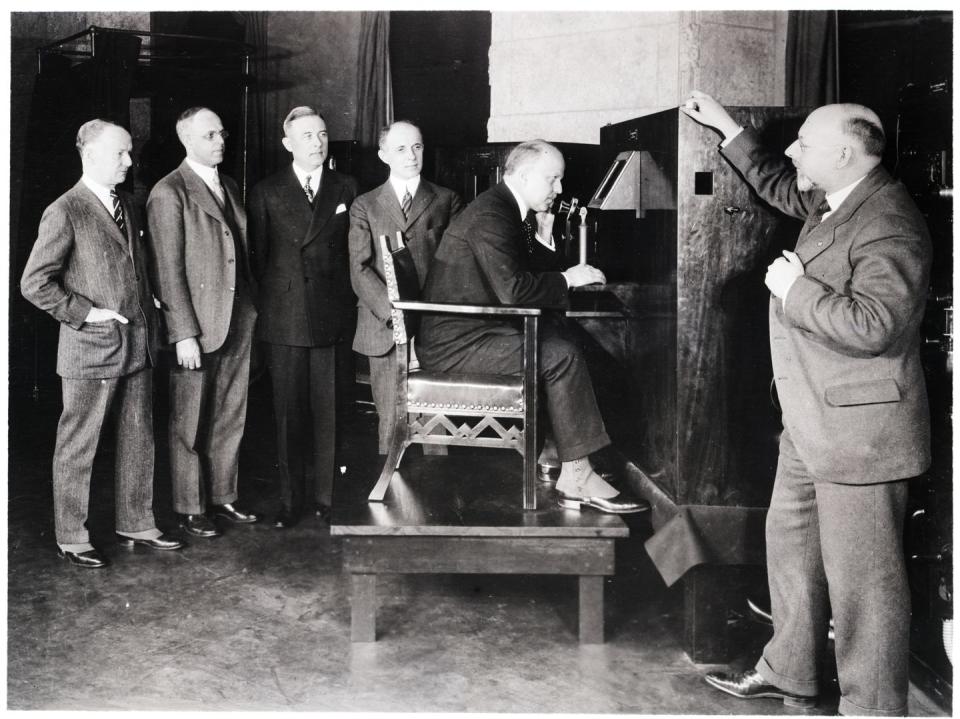
April 10: A Day for Defending Our Planet
In the second half of the 1800s, a newfound environmental consciousness took root among Americans, who, fresh from the struggle to maintain their nation's unity, began turning their attention to conserving the natural beauty and diversity of the country's wildlife and landscapes.
On April 10, 1866 (less than a year after the end of the Civil War), the ASPCA formed in New York City to advocate for better treatment of animals. Only a few years later, on April 10, 1872, J. Sterling Morton encouraged Nebraskans to plant trees to encourage national greenery. It was the very first Arbor Day.
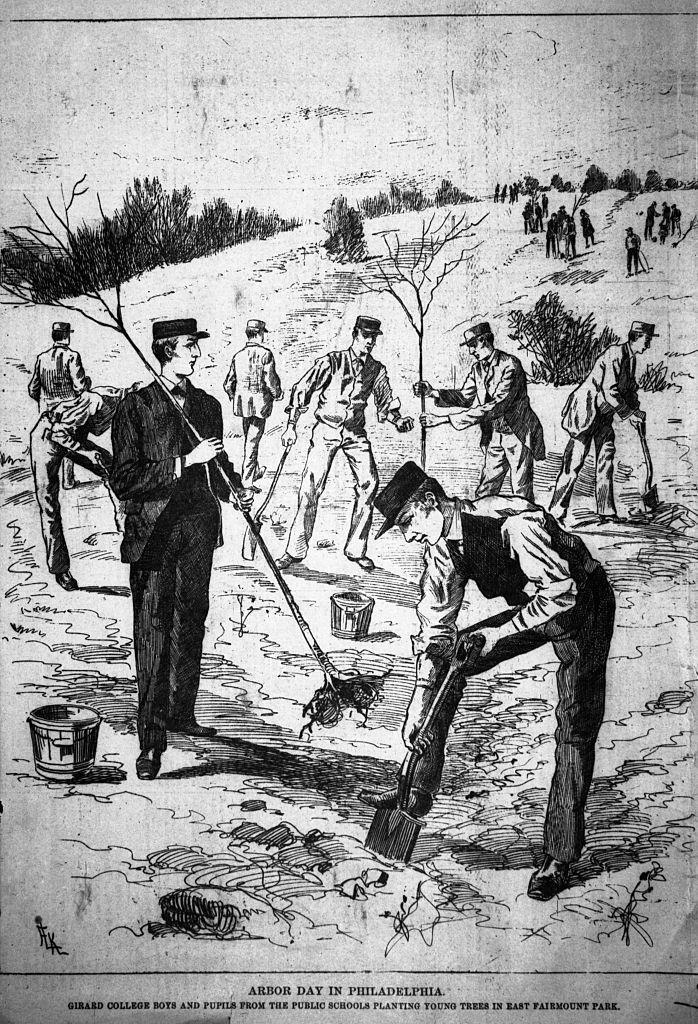
April 18: A Day of American Legends
As a fairly young nation, America didn't inherit any millennia-old traditions of gods and mythological warriors. But we worked really fast to develop our own pantheon of folk heroes.
Any student of history, or any fan of a certain poem by Henry Wadsworth Longfellow, knows that April 18, 1775 was the night Paul Revere went from simple silversmith to the stuff of legend, with his famous Midnight Ride.
By 1938, the stories of historic war heroes and patriots of centuries past had become a bit played out for young readers. That's why on April 18, 1938, Action Comics introduced a new kind of hero to represent "truth, justice, and the American way": Superman.
Buy This Day in History For Kids
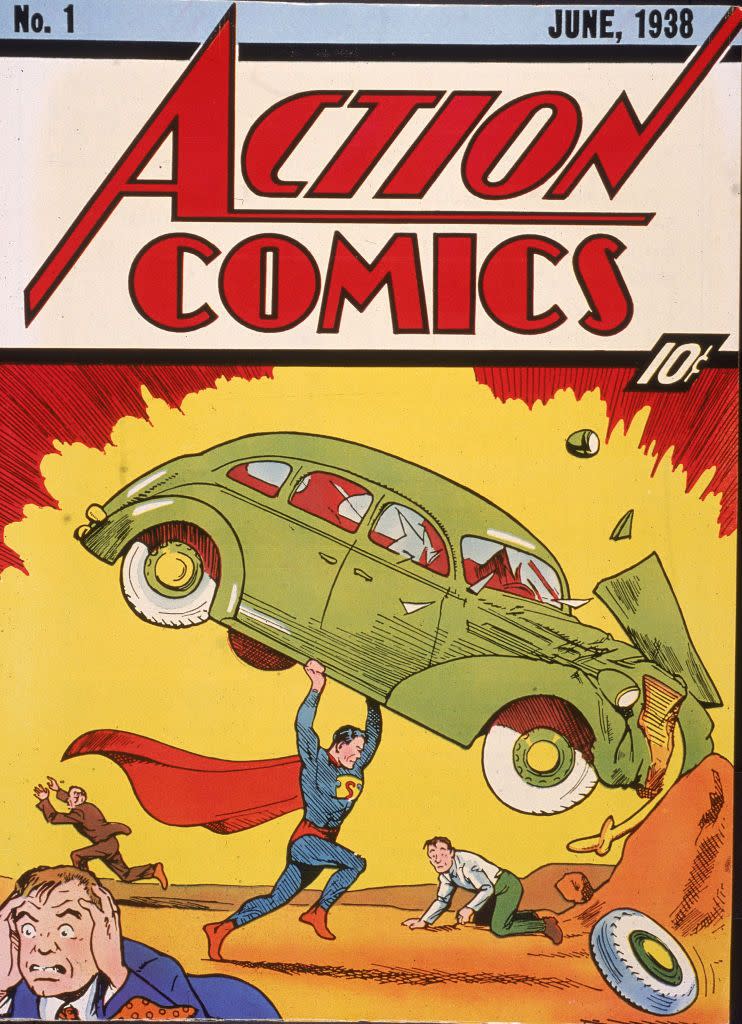
April 23: A Day for DIY Entertainment
On April 23rd, 1976, four kids in leather jackets from Forest Hills, Queens released their debut album, the self-titled Ramones. At a time where the radio was filled with the polished pop-disco hits of Rod Stewart and The Bee-Gees, a scrappy album of two-minute songs (made for less than $7,000!) changed the music industry and helped the punk rock movement explode across the world.
April 23 is also the birthday of YouTube. The online video platform that allows anyone with an idea and a webcam to circumvent the studios and TV stations began on this day in 2005, with the very first video upload, "Me at the Zoo."

April 25: A Day to Watch the Skies
When April 25 rolls around, be sure to turn your eyes upward. The next great (or terrible) human innovation could be happening right above you.
On April 25, 1944, Lt. Carter Harman flew a YB-4B helicopter to rescue four soldiers who had been stranded in Japanese territory, which was the first time a helicopter had ever been used in combat. (Lt. Harman would also go on to become an accomplished composer and music critic!)
Forty-six years later, humanity set its sights even higher, as the Hubble Space Telescope deployed on April 25, 1990.

April 28: A Day for Remarkable Voyages
On April 28, 1947, Thor Heyerdahl and his crew boarded their Kon-Tiki raft in Peru. They travelled to Polynesia to try to prove Heyerdahl's hypothesis that ancient South Americans had done the same, and were therefore the origin of the region's population. DNA evidence has subsequently proved his theory not totally correct, but there's no denying what they achieved with their legendary raft.
Skip ahead to April 28, 2001, and millionaire Dennis Tito had his very own space odyssey. He took a $20 million dollar trip up to the International Space Station, making him Earth's first space tourist.
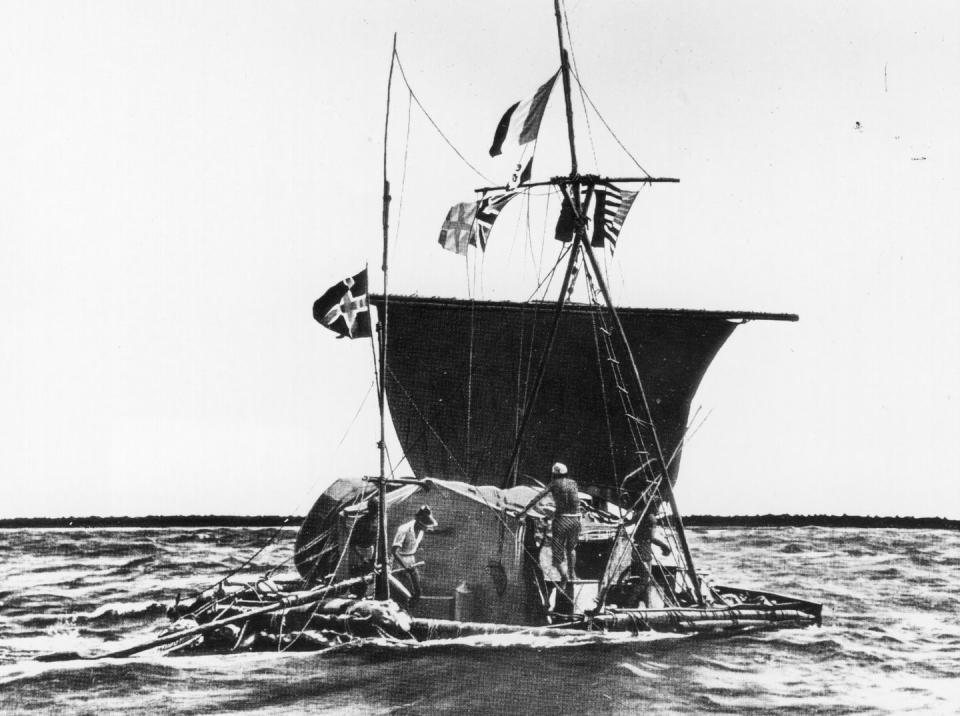
May 1: A Day of Childhood Heroes
If your childhood was filled with the vibrant worlds of animation and vivid panels of superheroes, May 1 is a landmark date worth celebrating, as it marks the introduction of three iconic figures who have captivated generations of fans.
May 1, 1962 ushered in a new era of storytelling with the first appearance of The Incredible Hulk in his eponymous comic book series. Interestingly, the Hulk's original iteration was a far cry from his familiar green; he bore a grey hue and emerged only under the cover of night instead.
May 1, 1984 saw Kevin Eastman and Peter Laird debut their independently produced comic book about four reptiles with awesome skills, the Teenage Mutant Ninja Turtles! Of course, when they debuted, they were much darker and more violent than the fun-loving dudes we know them as today.
And on May 1, 1999, America met SpongeBob SquarePants when his first episode premiered on Nickelodeon. And he was exactly the jolly burger-flipper we know him as today.
Buy This Day in History For Kids

May 8: A Day of Victory
It's wins all around on May 8. History buffs already know that May 8, 1945 is known as VE Day, short for Victory in Europe Day, as this was the day Germany surrendered during WWII. Thirty-five years later, in 1980, May 8 marked another victory against a deadly force: The World Health Organization announced that smallpox had been eradicated.
Any chance people celebrated those victories with a Coke? Because Dr. John Smith Pemberton actually invented Coca-Cola on May 8, 1886!
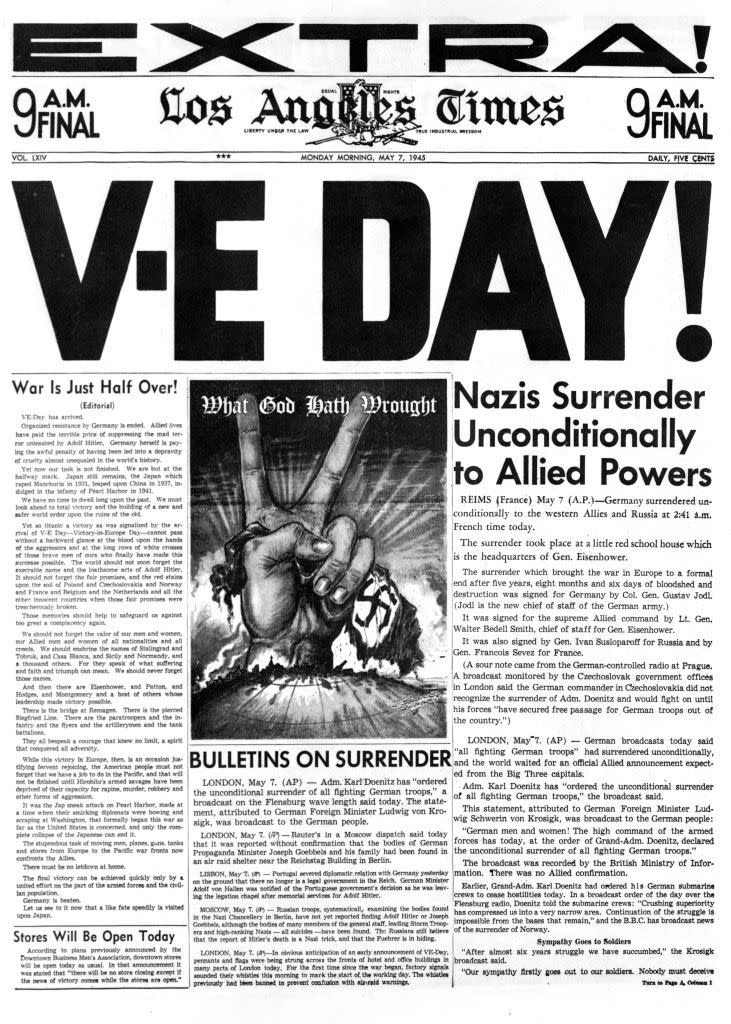
May 10: A Day for Innovation in Transportation
On May 10, 1869, the heads of the Union Pacific and Central Pacific railroads met to drive in the final spike of the transcontinental railroad. The so-called Golden Spike was driven in in Promontory, Utah.
Ninety-one years later, on May 10, 1960, the atomic submarine USS Triton made the first fully submerged trip around the world. It stayed underwater for 61 straight days!

May 15: A Day for Civil Rights
On May 15, 1869, the National Woman Suffrage Association was founded. Famed activist Susan B. Anthony assumed the pivotal role of the organization's first president, leading the charge to enshrine women's voting rights in the fabric of the nation.
More than a century later, on May 15, 2008, in a landmark case, the California Supreme Court ruled in favor of same-sex marriage, allowing LGBTQ+ couples the same rights as heterosexual couples.

May 21: A Day for Game-Changing Aviation
In 1927, this was the day that Charles Lindbergh landed his plane, The Spirit of St. Louis, in Paris, France. His 33.5-hour flight began on Long Island, New York, making him the first person to ever fly solo across the Atlantic Ocean.
Precisely five years later, on the very same date, aviation history was made once again with the completion of the second solo transatlantic flight. Charting a unique course from Newfoundland to Northern Ireland, Amelia Earhart fearlessly piloted her way into the record books, becoming the first woman to achieve such a monumental solo journey across the Atlantic.
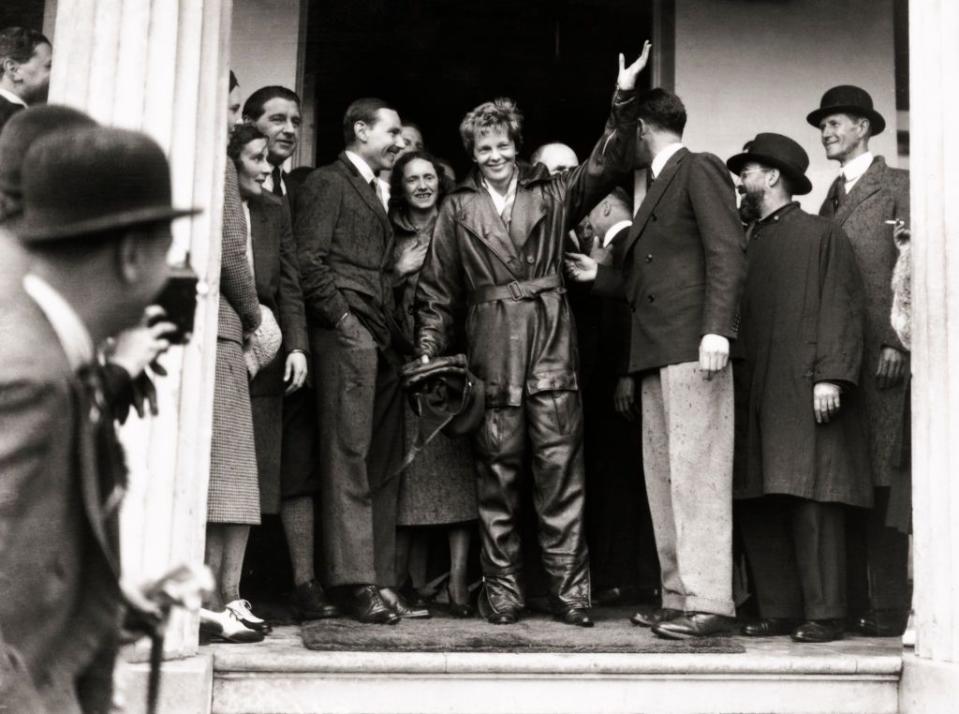
May 23: A Day for Medical Advancement
Are you reading this with glasses on? Or with arms that you'd like to keep attached? Then say thank you to May 23. Because on this day in 1785, Benjamin Franklin invented the bifocal glasses.
Nearly two centuries later, on May 23, 1962, surgeons successfully reattached the severed arm of a Boston boy named Everett “Red” Knowles.
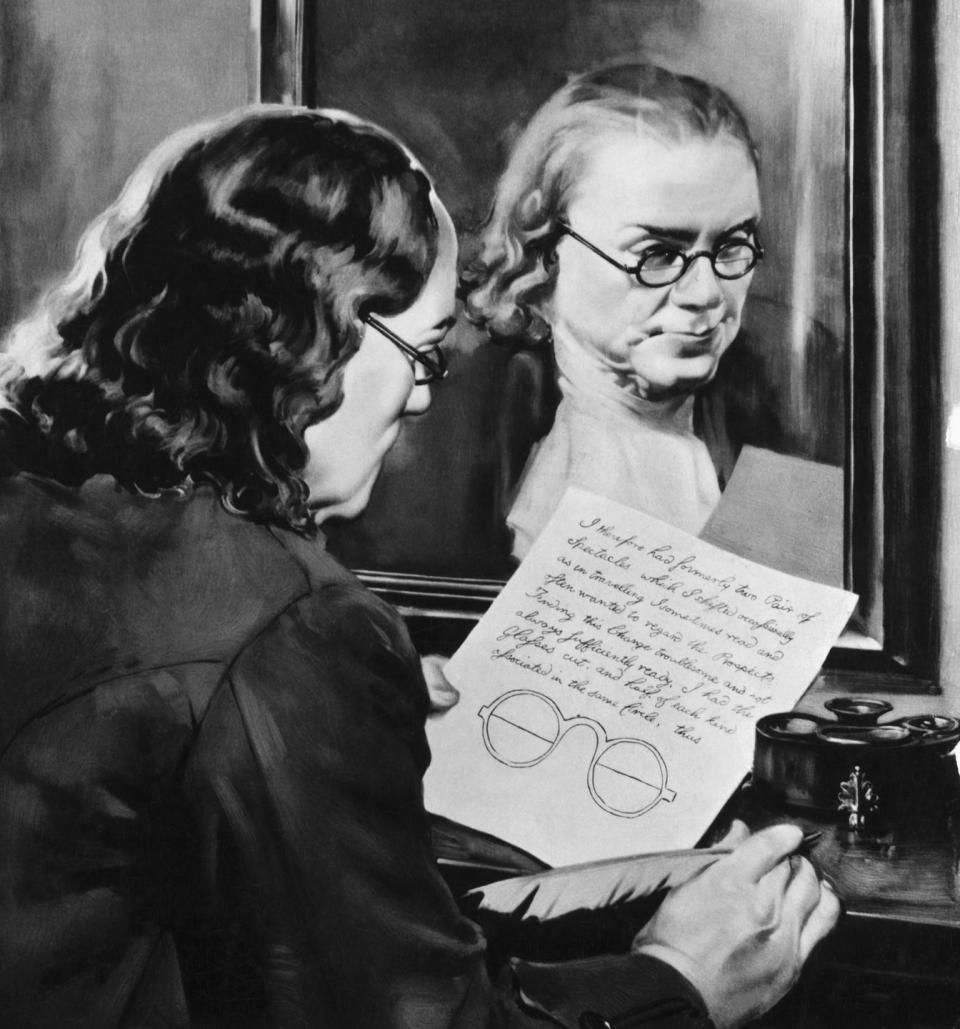
June 8: A Day of Invasions
On June 8 of the year 452, the formidable forces of the Huns swept into Italy, driven by the relentless ambition of the notorious Attila the Hun. His incursions instilled such dread among the Roman populace that they branded him the "Scourge of God."
Then, centuries later on the same calendar day in 793, the Vikings attacked the community of Northumbria, a region spanning what is known today as parts of England and Scotland. This assault would set the stage for the legendary Viking Age of Conquest.
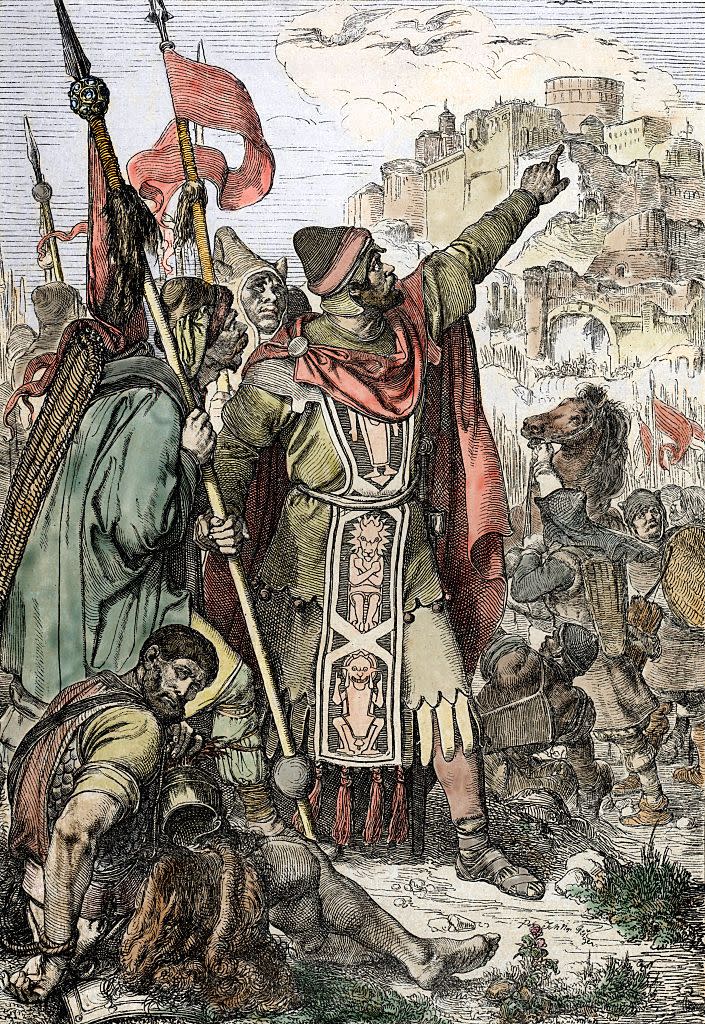
June 17: A Day for Landmark Architecture
The Taj Mahal and the Statue of Liberty stand as two of the globe's most iconic and esteemed monuments. Despite their vast distance and their residence in separate hemispheres, a shared thread of history links them together through the date of June 17.
That's the day, in 1632, that construction began on the opulent Taj Mahal. It would take 20 years to complete!
Then, on June 17, 1885, the Statue of Liberty arrived in New York. It showed up in 250 pieces, to be assembled once it reached America. It took just one year to put Lady Liberty together.
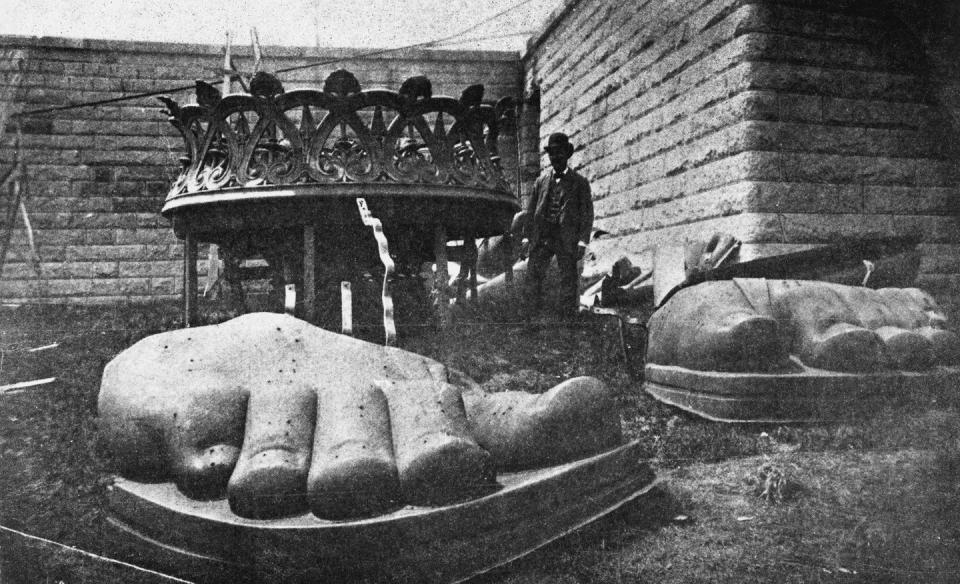
June 28: A Day of Moments That Became Movements
Sometimes a single moment in a single day can change the world in ways no one could imagine.
When 19-year-old Black Hand member Gavrilo Princip pulled the trigger on his pistol, and shot Archduke Franz Ferdinand in the neck, he certainly expected ramifications for his act of assassination. But nobody could have predicted that a violent act in the name of Serbian independence would kick off a war that would involve so many countries that it would be declared The Great War, later World War I.
Likewise, the police in New York City couldn't have expected anything to come from their early morning raid on June 28, 1969. It was to be no different than the typical invasive raids of the Public Morals Squad. Except on this fateful day at the Stonewall Inn, the patrons being harassed fought back. A crowd gathered, violence broke out, and the Stonewall Riots began. It was a watershed moment for the gay rights movement in America.
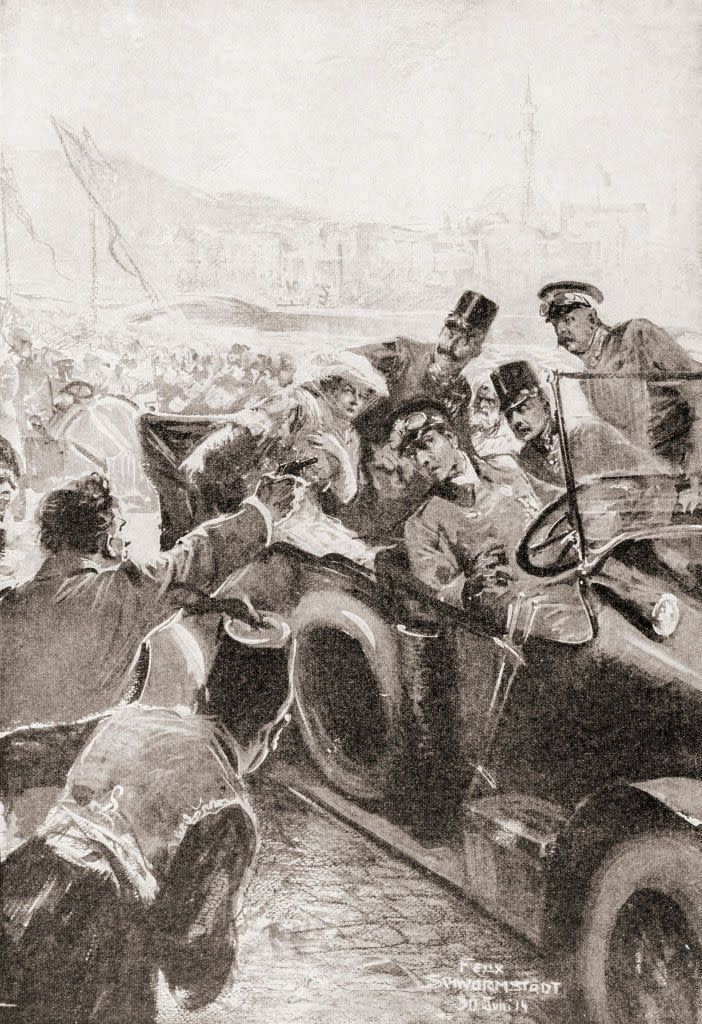
July 13: A Day of Activism
July 13, 1985 was the start of the Live Aid concert, a multi-continental, 16-hour music event that raised more than $125 million for famine relief.
On July 13, 2013, meanwhile, activist and writer Alicia Garza made a Facebook post with the first iteration of a phrase that would become a rallying cry around the world: “Black Lives Matter.”
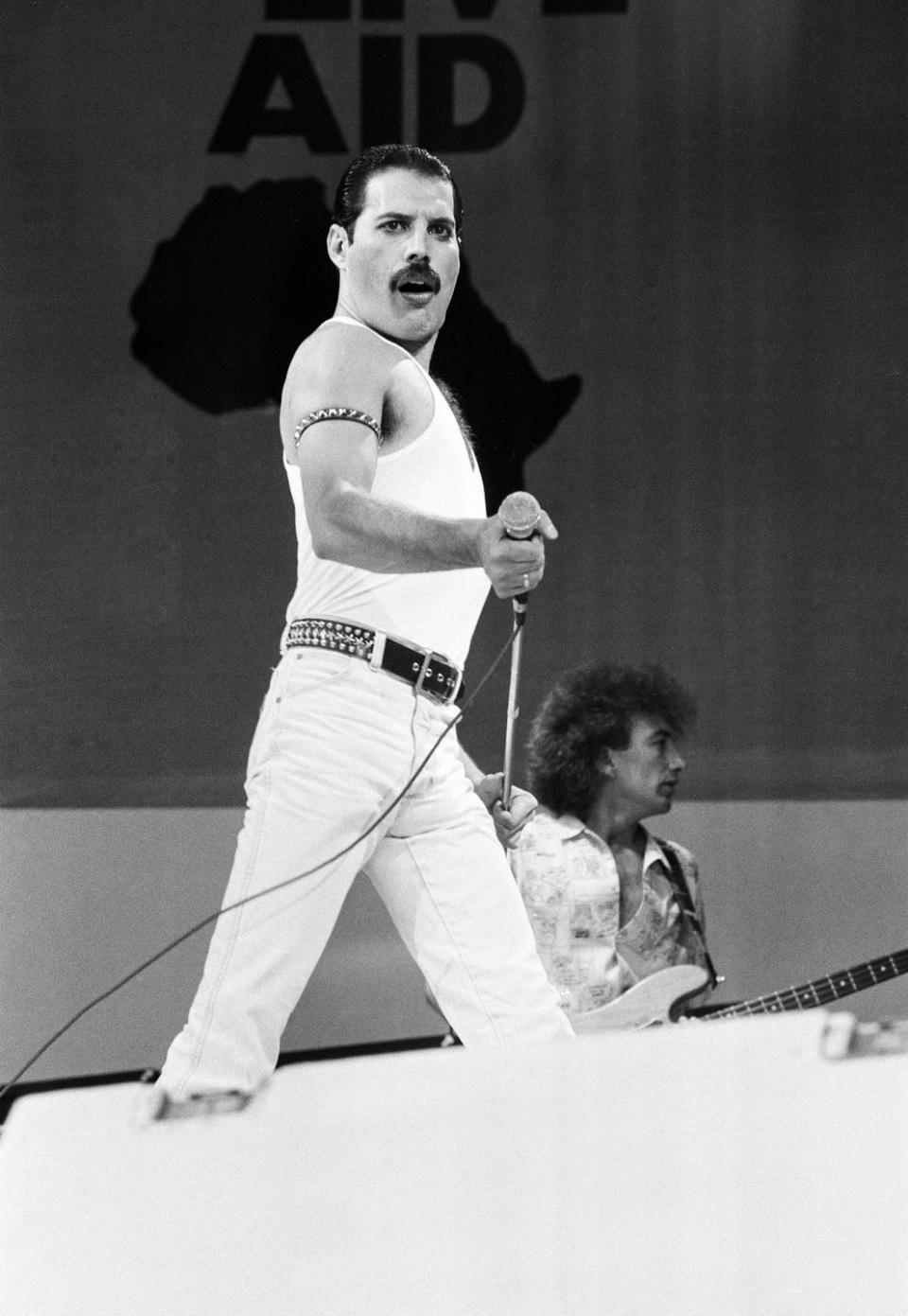
July 16: A Day That Changed Warfare Warfare
On July 16, two pivotal moments in history altered America's posture and self-perception regarding threats, whether they come from abroad or within its own borders.
On this day in 1945, the Manhattan Project reached its culmination with the Trinity test, marking humanity's first unleashing of a nuclear weapon. Although the use of such weapons is believed by some to have expedited the end of World War II in favor of the U.S., it simultaneously ignited an arms race during the Cold War era, leaving the specter of worldwide destruction perpetually hanging by the thread of a single command.
More than 50 years later, in the wake of the September 11 attacks, President George W. Bush announced the creation of the Department of Homeland Security, the first new federal executive department since the Department of Veterans Affairs in 1989. Created to serve as an analog to the Department of Defense for internal threats, the DHS has been dogged by controversy, including accusations of domestic surveillance and invasion of privacy.

July 20: A Day of Cosmic Exploration
On this day in 1969, Neil Armstrong became the first human to set foot on the moon. A well-known date for any space nerd, it's probably intentional that that same day was chosen, in 2021, as the day Jeff Bezos and his crew blasted off for a suborbital flight on Blue Origin's New Shepard rocket.
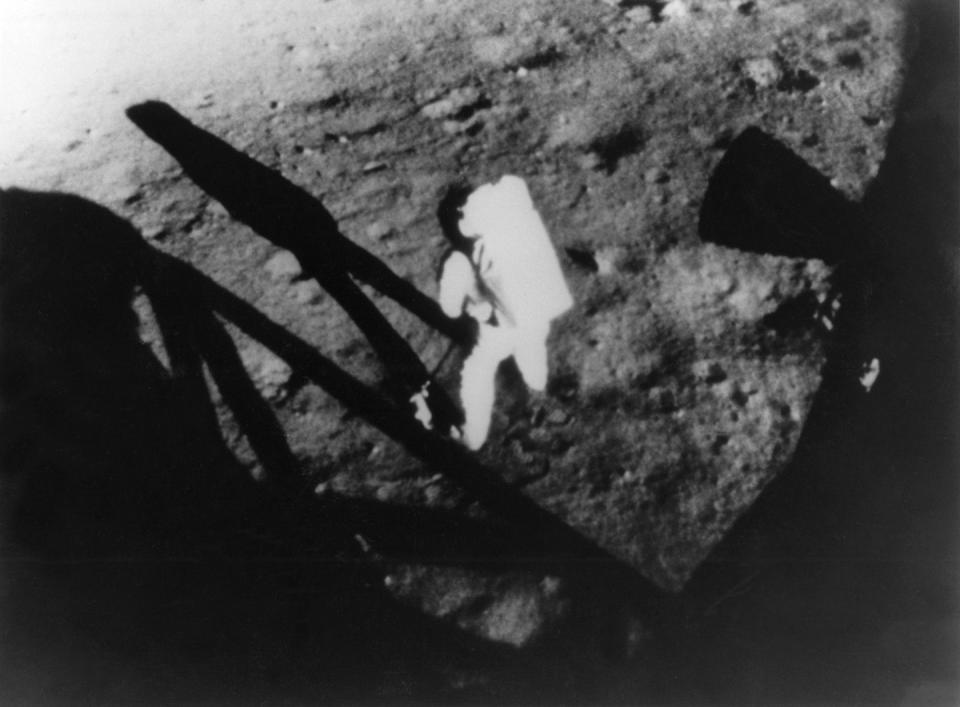
August 24: A Day of Devastating Flames
According to a medieval manuscript (which is now disputed by modern scholars), on this day in 79 CE, Mount Vesuvius erupted with such fiery ferocity that the Roman cities of Pompeii and Herculaneum were consumed by volcanic ash and mud.
Then, amidst the the War of 1812, flames came for America's capitol, courtesy of British forces. Knowing that the White House would be set ablaze, First Lady Dolley Madison and her enslaved servants acted fast, rescuing a portrait of George Washington from the impending flames.

September 16: A Day of Defiance
Every day is a good day to stand up for what you believe. And if you choose to stand up for it on September 16, you'll be in pretty remarkable company.
You can remind yourself with pride that, on that same day in 1620, the pilgrims stood up for their beliefs when they boarded the Mayflower, leaving England for the New World where they could practice their religious beliefs.
You can also remind yourself that, on that day in 1932, Mohandas Gandhi began his courageous and non-violent hunger strike from within his jail call to protest the actions of the British occupiers and demand better treatment for the Dalit caste.
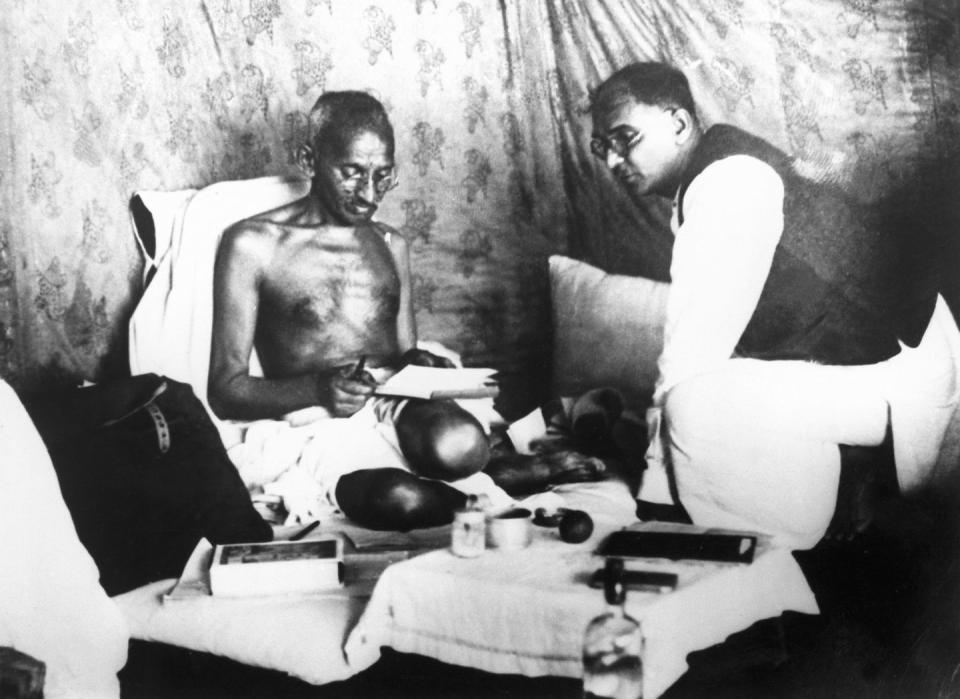
September 30: A Day for Iconic American Entertainment
On September 30, 1868, Louisa May Alcott published the first volume of her now-beloved novel Little Women, and introduced the world to Meg, Jo, Beth, and Amy, coming of age during what was then the "modern" era of 19th-century America.
Though not as high-brow as a contender for the Great American Novel, September 30, 1960 introduced American audiences to a very different quartet of characters: Fred, Wilma, Betty, and Barnie. The Flintstones, the first prime-time animated sitcom, ran for six seasons and delighted viewers of all ages with the "modern stone-age family."
Buy This Day in History For Kids
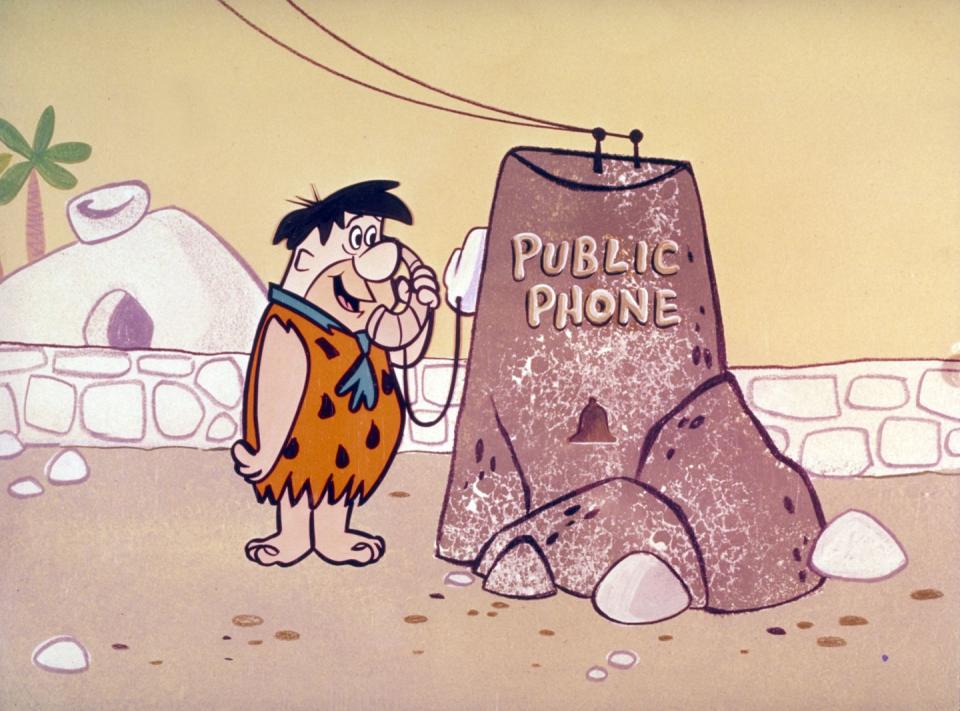
October 14: A Day of Aerial Accomplishments
On this day in 1947, Air Force Captain Chuck Yeager became the first person to fly faster than the speed of sound. And on this day in 2012, the speed of sound was broken in a very different way. Millions tuned in to see skydiver Felix Baumgartner break the sound barrier... in free fall!
And hey, if you're less "the right stuff" and more "stuffed with fluff," that's okay, too: the first book featuring Winnie-the-Pooh was also released on October 14, 1926.

November 23: A Day That Changed Music
November 23, 1889 saw the installation of the first-ever jukebox at Palais Royale Saloon in San Francisco. The ability for music fans to call up their favorite tunes with the simple insert of a coin was instrumental in the proliferation of rock music.
But just where did rock and roll come from? If you ask the superstitious, they'll tell you it was a deal with the devil down at a crossroads. And the man they say sold his soul for his supernatural guitar skills? That's blues musician Robert Johnson, who had his first studio session on November 23, 1936 in San Antonio. Johnson's records would prove influential to virtually every rock guitarist who came after him.
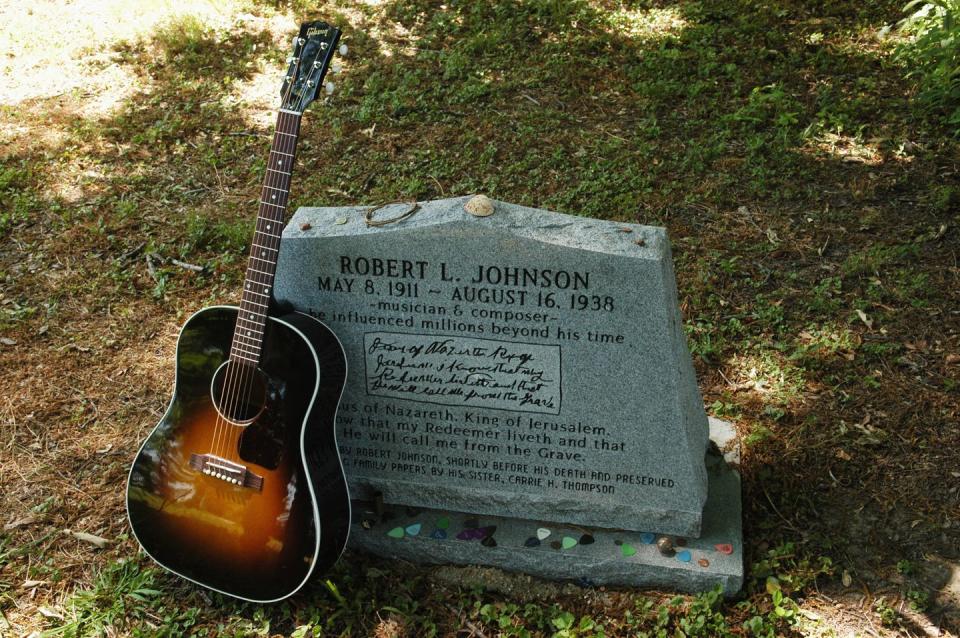
November 27: A Day That Changed Movies
On November 27, 1920, audiences flocked to the theatre to see what was, in essence, the first superhero movie, The Mark of Zorro. The film starred the original swashbuckling action star of the silver screen, the legendary Douglas Fairbanks, who created the template that heroes like The Rock and Keanu Reeves still follow to this day.
And on November 27, 1940, a man was born who would himself become arguably the greatest action star of all time: Bruce Lee.
And if you like your film franchises with more talking snowmen and musical numbers, November 27, 2013 saw the release of the surprise smash hit that sparked a massive box-office resurgence for Disney, Frozen.
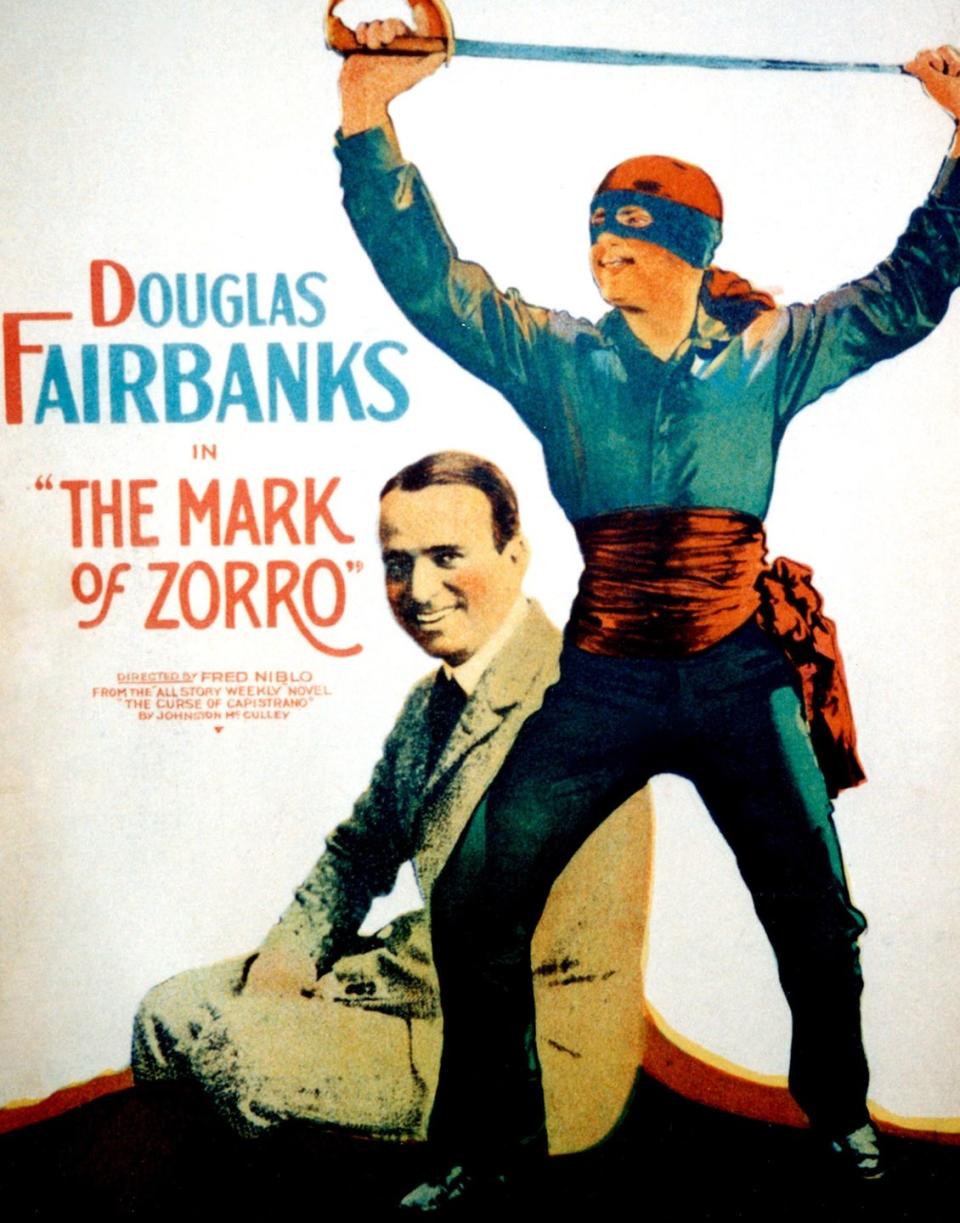
December 2: A Day of Presidential Policies
As the young United States of America emerged from the shadows of the American Revolution and the War of 1812, the country was in a period of defining its global stance and asserting its influence within its hemisphere. On December 2, spanning years apart, two significant and contentious presidential pronouncements were made, each playing a crucial role in sculpting the nation's destiny.
First, in 1823, President James Monroe outlined The Monroe Doctrine, which declared that any attempt by European powers to colonize parts of the Western Hemisphere would be viewed as an act of aggression by the United States.
Twenty-two years later, in 1845, President James K. Polk took this territorial thinking a step further, with an added dose of "destiny." His concept of Manifest Destiny, outlined in his State of the Union address, declared it was America's God-ordained right to expand westward to the other coast of the continent. Polk may have only served one term, but the (often deadly) consequences of his preaching of westward expansion lingered long after his time in office ended.
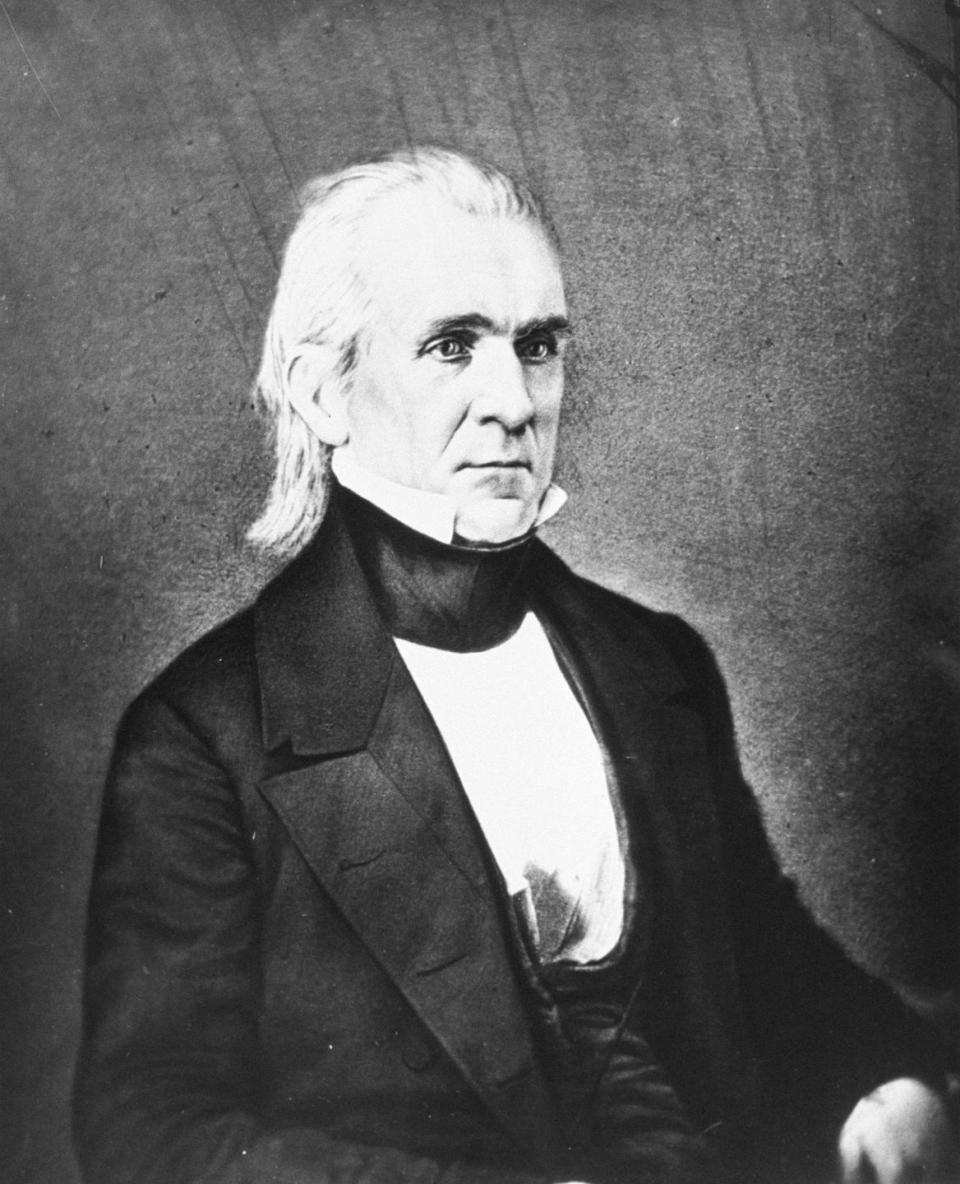
December 5: A Day of Naval Mysteries
A story of people disappearing at sea under strange circumstances? That's enough to ignite some conspiracies. But two high-profile high-seas disappearances happening on the same day, decades apart? We couldn't blame you if you went full X-Files on us for a second.
The first creepy occurrence happened on December 5, 1872. That's when British sailors discovered the ship Mary Celeste adrift at sea, having departed New York City eight days prior. The sailors boarded, only to discover that while all the cargo was still aboard, the 10 crew members had simply disappeared. To date, their whereabouts have never been determined.
Decades later, on December 5, 1945, five U.S. Navy Avenger torpedo bombers left Ft. Lauderdale Naval Air Station on a routine training run... and never returned. Rescue crews were sent out to search their flight path, which was within the area known as the infamous Bermuda Triangle, but no trace of any of the bombers, or their occupants, were ever found.

You Might Also Like

